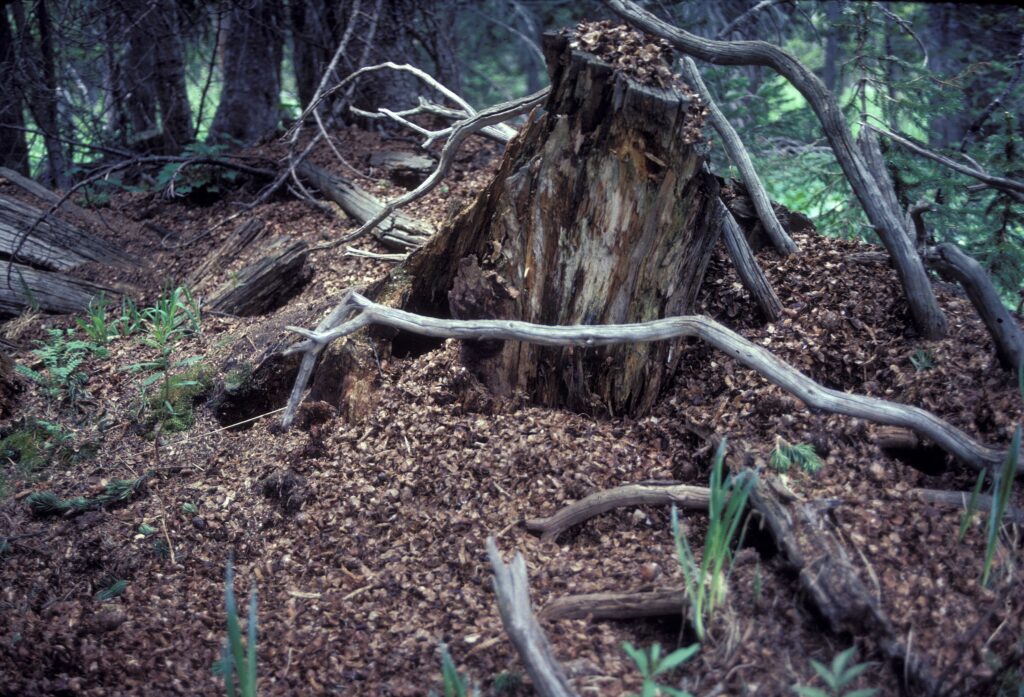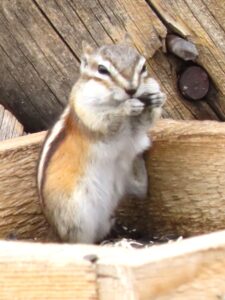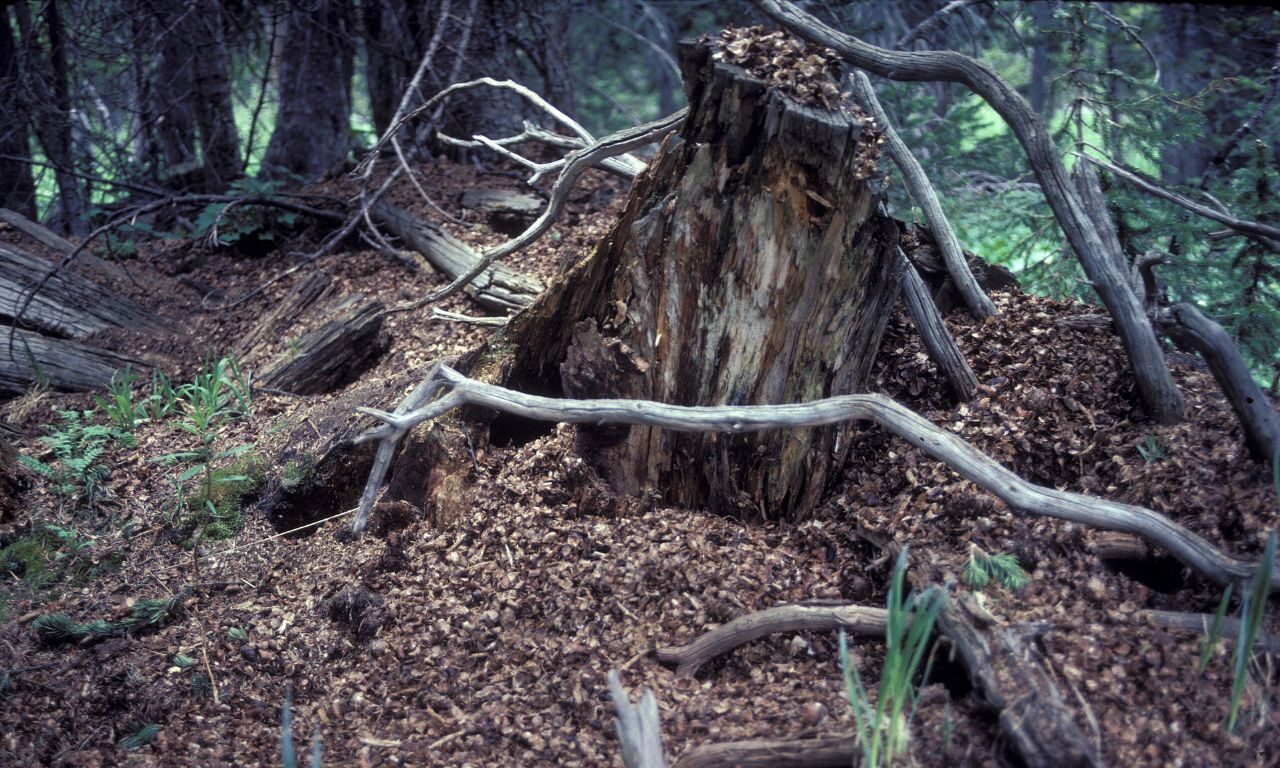Do you carry food home from a grocery store or farm stall to eat days later? If canned beans or soups are on special at your local supermarket, do you overbuy and cache some items in a pantry, larder, or kitchen shelf at home, to be eaten later? Most readers probably do. We’re no different from many mammals and birds in this respect. We need food to sustain us every day, but we don’t always have easy access to it when hunger pangs hit. We plan.
So do pikas, squirrels, cougars, chipmunks, jays, chickadees, magpies, and even, in a way, bears. The details vary, and the stories are intriguing.
Some animals solve the winter food issue by migrating south. Makes sense, although the journey is hazardous. Others, hibernators such as bears, stock up on calories in fall and accumulate thick layers of belly fat to see them through the chilly and provision-less months. Their “cache” is internal. Other hibernators might wake periodically to nibble on their close by store of saved vegetation or seeds.
Local animals that remain active year-round must eat no matter the season, but food availability varies widely. So, they cache supplies, their larders for later.
Pikas spend the summer and early fall amassing hay piles full of fragrant and drying tundra vegetation. They stash it away in the shelter of rocks, accessible for future munchy moments.
Chickaree squirrels in pine forests build large heaps (larders or middens) of pinecones and shredded remnants from which they extract nutritious seeds. Other edible oddments, such as bits of fungus, may also be buried in the well-guarded pile. And if you approach that larder, the chickaree will no doubt scold you severely!

Chipmunks and ground squirrels often retreat to the relative safety of their home or hole to eat. Danger lies in feasting, exposed, in the great outdoors! They may stuff their cheek pouches with seeds and scurry back to shelter before they empty their seed cheeks and eat, or stash.

Cougars cache meal remnants short term. After a large kill, they feast until they’re full. They save and hide the leftovers but may lurk close by keeping watch on their pantry-for-now. Beware! Other predatory mammals such as foxes may bury bits and bones to retrieve them when they next get hungry, but before the remnants rot to inedibility. Does this remind you of your pet pooch?
Most remarkable of all are the fox squirrels, jays, crows, and magpies, and others that cache geographically. It’s known as scatter hoarding. Rather than maintaining a single heap of edibles, they spread individual food items separately, maximizing the chance that some, at least, will escape being pilfered. Think about what this complex behavior entails!
First, find a chunk of food. Next, find a suitable location to hide it. Make sure, when you bury it in the earth, tuck it under a section of loose bark, or poke it into a rock crevice, that no other animal is watching and waiting for their chance to steal a free meal.
If you are seen burying goodies, dig them up and rebury them somewhere safer without being seen to do it! Finally, remember for days, weeks, or months, where you hid that precious life sustaining morsel. Go to the correct spot and successfully retrieve it. Talk about a good memory!
Inevitably, some items are never reclaimed. Maybe the bird or mammal forgets some hiding places, or moves on to a different territory, or simply doesn’t survive. Then the lost seed may become food for the multitudes of small soil dwellers, or sprout and become tomorrow’s shrub or sapling. Nothing, in nature, is ever wasted.


